Anne Gaylor, principal founder of the Freedom From Religion Foundation, which was a pioneer supporter of abortion rights and which later became a foe of Jewish religious boundaries called eruvim, died June 14 in Fitchburg, Wis. She was 88.
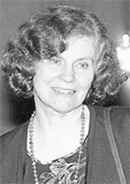 Gaylor authored Abortion Is A Blessing in 1975 which described the battle to legalize abortion in Wisconsin.
Gaylor authored Abortion Is A Blessing in 1975 which described the battle to legalize abortion in Wisconsin.
Her editorial proposing legalized abortion, which appeared in 1967 in the Middleton Times-Tribune, owned by herself and her husband Paul, “created shock waves” and propelled her into abortion rights activism,” said the obit on the website of the FFRF.
Roe v. Wade, the landmark Supreme Court Decision legalizing abortion, was handed down in 1973.
FFRF, with 23,000 members, moved on to other causes such as attacking display of religious symbols on public property; challenging laws that proclaim such things as “National Day of Prayer” and “Year of the Bible,” and attacking Wisconsin’s establishment of Good Friday as a state holiday.
“More people have been killed in the name of religion than for any other reason,” is a Gaylor quote that appeared in a 926-word New York Times obit June 25.
“Nothing fails like prayer” is another quote by Gaylor who called the bible “a grim fairy tale.” Her support of abortion was based on her belief that children should be “wanted.”
FFRF Fights Eruvim
One cause of FFRF in recent years has been fighting the spread of Orthodox Jewish religious boundaries called eruvim. Using telephone wires, string, rivers, railroads, highways, and markers on poles called lechis, the observant turn public property into a private domain within which many activities are allowed that would otherwise be forbidden by religious beliefs.
Only one major court decision has found such demarcations to be illegal—the 2001 case of Tenafly Eruv Assn. v. Tenafly, N.J. Federal District Judge William Bassler ordered an eruv in Tenafly dismantled, saying “public property should not be permanently allocated to a religious purpose.”
The decision was overturned the next year by U.S. Appeals Court Judge Thomas Ambro who noted that Tenafly had allowed house number signs, lost animal signs, orange ribbons posted by high school students, and directions to churches with crosses on them, on utility poles and could not therefore bar lechis.
U.S. Appeals Court Upheld Eruv
Legal decisions, including a New York Appeals Court decision Jan. 6, 2015 have emphasized that lechis are “nearly invisible” and “casual observers” do not attach any particular meaning to them, assuming they even noticed them at all.
Eruvim opponents say such arguments ignore the fact that eruv maps are now “readily accessible online” and are accompanied by extensive descriptions of their meaning—public land is converted into private space.
|
|
Proponents say eruvim merely allow believers to push and carry certain objects on the Sabbath and are thus created for “secular” purposes.
The phrase “readily accessible online” was in a paper on eruvim that was published Jan. 30, 2015 by Stanford University Prof. Charlotte Fonrobert, who specializes in Judaism and Talmudic literature and culture. The paper focuses on the dispute in Westhampton Beach over an eruv proposed for that community.
JPOE Says Eruv Is Publicized
Jewish People Opposed to the Eruv argued in the Jan. 6 case that the proposed eruv would “not go unnoticed; rather, it will be a constant and ever-present symbol, message and reminder to the community at large, that the secular public spaces of the village have been transformed for religious use and identity.”
FFRF staff attorney Andrew Seidel last year demanded that a new eruv in Pinetree Park in Miami Beach be taken down because it violated separation of church and state. He also asked that all other eruvim on the island be dismantled.
“The religious significance of eruvin is unambiguous and indisputable,” he said. “They are objects which are significant only to some Jews as a means to obey religious laws that have no bearing on non-adherents.”
The 2002 Appeals Court decision noted the Tenafly Eruv Assn. said an eruv is “not a religious symbol” but an item with “religious significance.”
Eruv Attorney Sugarman on Yale Program
Robert Sugarman, lead attorney for the East End Eruv Assn. which is seeking permission for eruvim in Westhampton Beach, Southampton and Quogue, spoke at the Yale Law School Oct. 22, 2012 on the topic, “The Eruv Meets the First Amendment.”
He was part of the “Lecture and Performance Series: The Eruv, Fall 2012,” at Yale.
He is described in the program as National Chair of the Anti-Defamation League. Sponsoring him was the Jewish Law Students’ Assn. Sugarman, a senior partner in Weil, Gotshal & Manges, one of the 15 largest law firms in the world with $1.3 billion in revenues, has been emailed a request for a copy of his lecture. Weil is working pro bono for EEEA.
The Yale program on eruvim ran from Oct. 10 to Nov. 8, 2012.
It included a display titled “Israel: Gated Community,” at the Allan and Leah Rabinowitz Gallery, Joseph Slifka Center for Jewish Life at Yale that ran from Oct. 8 to Nov. 16.
An exhibit at the ISM Gallery of Sacred Arts was called “This Token Partnership: The Materiality of Jewish Spatial Practice.” It ran from Oct. 10 to Dec. 14.
“Internal Borders” was the topic of a display from Oct. 17-Nov. 30 at the Edgewood Gallery, Yale School of Art.
Rachel Havrelock, University of Illinois, spoke Oct. 10, 2012 on “Biblical Borders and the Nation-State,” sponsored by the Program in Judaic Studies.
A “Symposium on the Mystery and History of the Eruv” took place Oct. 28 at the Yeshiva Museum, Center for Jewish History, New York.
Manuel Herz talked on “The Light of Diaspora” Nov. 8 at the Slifka Center for Jewish Life at Yale.
Eruvim Examined in New York Program in 2012-13
A series of exhibits and talks on eruvim took place in New York City from the fall of 2012 until the spring of 2013.
"It's a Thin Line, the Eruv and the Jewish Community in New York and Beyond," was the title of an exhbition at the Yeshiva University Museum near Union Square. It noted that "The eruv is one of the most fascinating though little understood and sometimes controversial concepts in Jewish life." The exhbition traced the history of the eruv and its adaptation into New York and raised "provocative questions."
A public program on the "Mystery and History of the Eruv" was held Oct. 28 at the Center for Jewish History, 15 W. 16th st.
Rabbi Adam Mintz spoke on "The dynamic role of the eruv in transforming personal and communal Jewish life in America in the late 20th century" at the Center on Feb. 2, 2013.
"The Eruv and Free Speech" was a topic in the spring of 2013 hosted by the Yeshiva University Museum, the University's Center for Jewish Law and Contemporary Civilization at Cardozo Law School, and the Straus Center for Torah and Western Thought. A panel of "top legal scholars" discussed "using the eruv as a window into church-state issues and the relationship between law and community building."
Eruv’s “Visibility” Is a Problem
Margaret Olin, senior scholar, Yale Divinity School and curator of the Yale program, in an article for the month-long observance, which was titled, “Shaping Community: Poetics and Politics of the Eruv,” wrote that “An eruv’s balance between visibility and invisibility is a barometer of the relations within the community.”
“The material that effects the transformation of secular public land into private property for religious purposes 24 hours a week, like the pumpkin that turned into Cinderella’s coach, is humble,” she also wrote.
“Certainly the eruv is no work of high art. It is closer to bricolage. [French for “do-it-yourself”] While the professional engineer uses specialized tools for every project, the bricoleur attacks problems that arise with whatever he has at hand, supplementing what he finds in the street with parts acquired at the hardware store to create the semblance of a post-and-lintel construction.”
Eruv Could be “Divisive”
Olin notes that “Reform Jews may fear that an eruv will attract Orthodox Jews to their neighborhood, alienating gentiles, who might not see the eruv, but will take note of the Orthodox Jews who use it. Indeed, the interest in camouflaging the eruv suggests the potential divisiveness of this seemingly innocent construction.”
Prof. Alexandra Susman of the UCLA Law School authored a 34-page paper in 2009 on eruvim that declared them unconstitutional.
Prof. Marci Hamilton of the Benjamin Cardozo Law School at Yeshiva University authored an 18-page paper for Westhampton Beach in 2008 that reached the same conclusion, saying that if lechi eruv symbols were allowed on utility poles on WHB property there would be no rationale for limiting other signs on the poles “of every size, shape and description.”

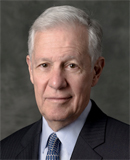

 Hugh Braithwaite, founder of Braithwaite Communications in Philadelphia, died Feb. 28. He was 63.
Hugh Braithwaite, founder of Braithwaite Communications in Philadelphia, died Feb. 28. He was 63.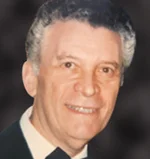 Alfred Horowitz, who was a PR counselor, educator, businessman and philanthropist, died February 14 of natural causes. He was 93.
Alfred Horowitz, who was a PR counselor, educator, businessman and philanthropist, died February 14 of natural causes. He was 93.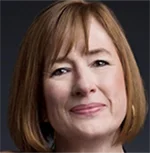 Ginger Reeder, the former VP-corporate communications at Neiman Marcus, died Jan. 9. She was 64.
Ginger Reeder, the former VP-corporate communications at Neiman Marcus, died Jan. 9. She was 64. José Antonio Llorente, founding partner and executive chairman of Spain’s LLYC, died from cancer on Jan. 1. He was
José Antonio Llorente, founding partner and executive chairman of Spain’s LLYC, died from cancer on Jan. 1. He was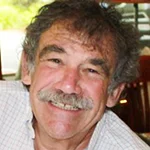 Bob Dorf, who founded his own firm and then ran Dorf & Stanton with Alex Stanton, died Dec. 2. He was 74.
Bob Dorf, who founded his own firm and then ran Dorf & Stanton with Alex Stanton, died Dec. 2. He was 74.


 Have a comment? Send it to
Have a comment? Send it to 
No comments have been submitted for this story yet.